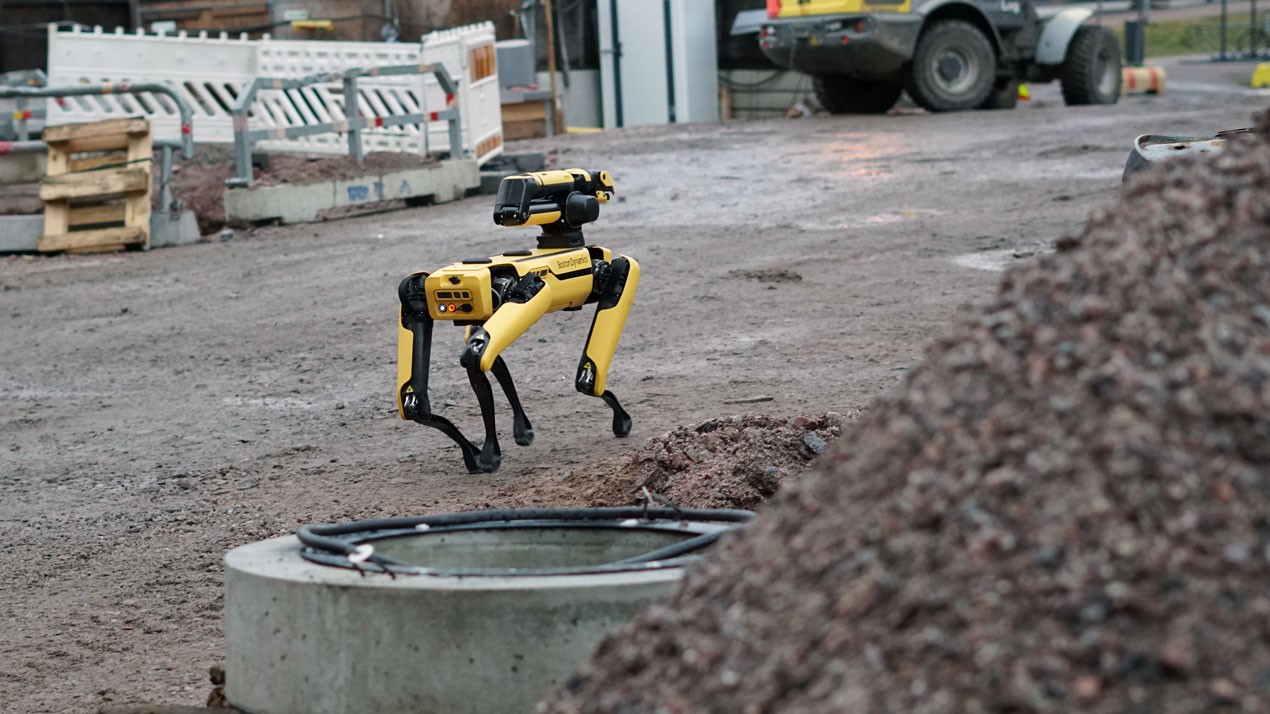Chinese startup Noetix launched Bumi, a bipedal robot that challenges mobile robots at a much heftier price. Is this just a whim or a breakthrough that could make robots a viable tool for even small construction companies?
The Noetix Bumi robot is a humanoid robot designed primarily for educational and family use. It stands 94 cm (about 3 feet) tall, weighs 12 kg (26 pounds), and can run for 1 to 2 hours per charge.
Bumi walks on two legs with stable steps and performs flexible, complex movements, including dancing, enabled by proprietary motion-control algorithms that combine imitation and reinforcement learning.
Bumi has a front-facing camera that detects objects and faces, and it is also equipped with microphones for capturing spoken words, which it can process into actions such as following commands.
You need software, too
As an affordable robot (under $1,400), Bumi can do many things that mobile industry-grade robots have been able to do for $50,000 or more. So, from the physical point of view, it is a breakthrough and gives a taste of things to come.
The true breakthrough won’t come from hardware; it will come from software that gives the robot the autonomy and adaptability to meet the demands of construction work.
Bumi supports block-based visual programming for beginners, enabling the creation of activity sequences and responses to commands, which makes it suitable for educational purposes such as teaching coding and robotics. I assume Bumi’s software is limited to basic maneuvers.
If you want a robot to be useful on the jobsite, it needs to maneuver and work independently, which is possible with embodied AI. The robot must react to changing conditions, avoid collisions with humans and objects, and have some reasoning capabilities.
Currently, most mobile construction robots can perform only one task, such as drilling, and require a human operator to guide them to the right spot. Any deviation from the initial setup sets them off course. However, some more advanced robots, like Boston Dynamics’ Spot, can navigate construction sites independently and even open doors while collecting data.

Training is key
To achieve autonomy, robots require extensive training, as do autonomous vehicles. Still, there’s a difference: a construction site is much more complex than a street; it is a three-dimensional environment, with no standard rules.
There are several ways to teach the AI how a robot should move and react to its environment. Nvidia, for example, uses Omniverse, a digital twin environment, and simulated robots. Its Isaac robotics development platform includes libraries, frameworks, AI models, and simulation tools for robotic development.
Another technology for robotic training is Large Behaviour Models (LBMs). They are generalist embodied-AI models that take in sensor inputs (vision, lidar, Inertial Measurement Units, maybe language/instructions) and output robot actions/trajectories. LBMs aim to do for physical robots what LLMs did for digital assistants: generalize from experience rather than hard-coding every task.
LBMs are emerging as a foundation technology and could become the “operating system” for future site robotics.
Prepare for cobots
Whatever the technology, training humanoid robots to work side-by-side with human workers is a big leap.
An October 17, 2025, McKinsey & Co. article, “Humanoid robots in the construction industry: A future vision,” envisions humanoid robots as a possible solution to construction’s productivity problem.
The article’s authors suggest that the most practical tasks for humanoid robots in construction include surveying, waste management, cleaning, painting, installing interior fixtures and partition walls, and certain demolition tasks.
While the large-scale deployment of humanoids at the construction site may be about a decade away, construction leaders should start preparing now, the authors urge.
Why humanoid robots in the first place?
At first glance, the idea seems counterintuitive: why build a complex humanoid robot when a specialized drywall-installing machine could be simpler, cheaper, and better at that one job?
The brief answer is that humanoid robots sacrifice short-term efficiency for long-term flexibility and cost-effectiveness. Building a unique robot for each task (drywall, painting, welding, drilling, etc.) fragments R&D, manufacturing, maintenance, and training costs.
Besides, tools, materials, workflows, and safety standards assume a human body.
Another good question is: should we design jobsites to be suitable for robots, instead of making robots suitable for jobsites? The first approach works when humans are almost entirely removed from performing physical work, but most construction sites will probably involve a mix of people working alongside robots.
The road ahead
Robotic drones and data-collection units are already proving their worth on industrial and construction sites. They offer early lessons in automation under messy real-world conditions. Each deployment feeds valuable data back into the next generation of embodied AI.
Bumi may not climb scaffolding or install drywall, but it signals something profound: hardware is no longer the bottleneck. When a $1,400 humanoid can balance, walk, and perceive, the next leap will come from the software.
We are entering the era when a robot’s body costs less than its brain. Once construction robots can learn, adapt, and cooperate safely alongside humans, the economics of automation will flip. The question won’t be whether humanoid robots can handle construction tasks, but how quickly we can adapt to work with them.
View the original article and our Inspiration here


Leave a Reply